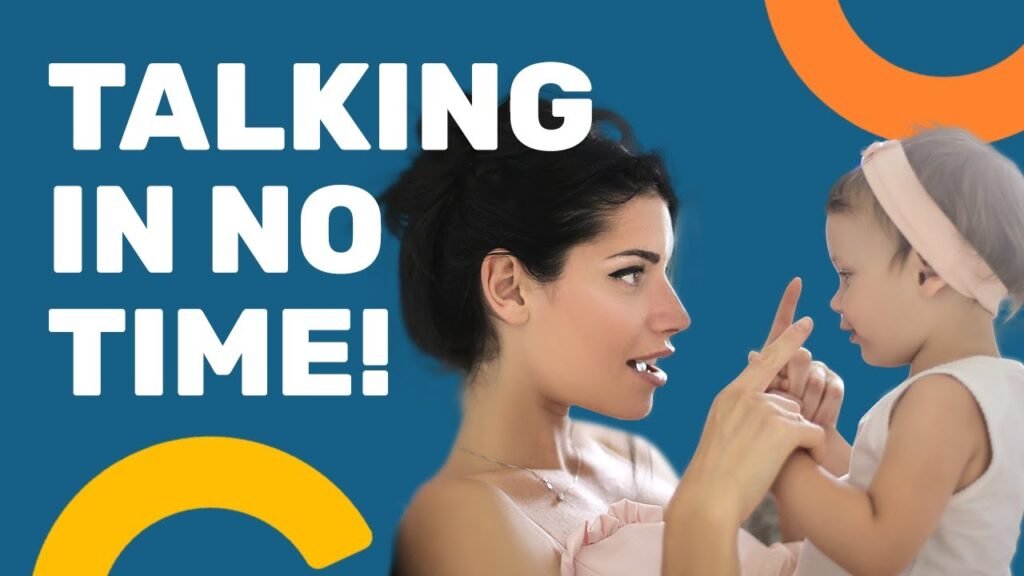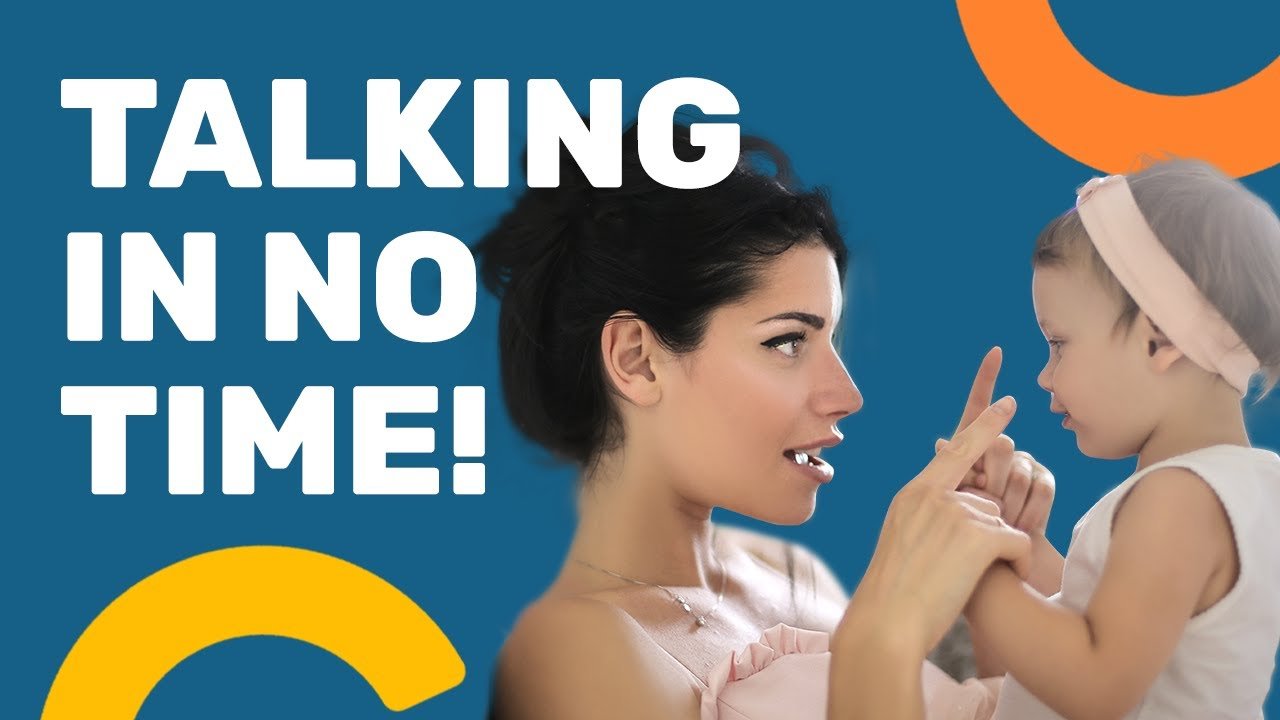“3 Shortcuts to Get Your Toddler Talking Sooner” by Emma Hubbard is a video that offers three simple techniques to help teach your toddler to talk. These techniques are easy to incorporate into your daily routine and are not stressful for you or your little one. If your toddler is struggling to communicate their needs because they don’t have words yet or getting frustrated, these tips will help you get there sooner. The video covers the importance of giving your child time to process and respond, creating talking opportunities through strategic placement of favorite items, and using fun words and sounds during play. Along with these tips, the video also explores three common mistakes parents make that discourage their toddlers from talking.
Overall, this video provides valuable insights and practical advice for parents who want to encourage their toddlers to talk, making communication easier and less frustrating for both you and your child.

Shortcuts to Get Your Toddler Talking Sooner
As parents, we all want our toddlers to start talking and expressing themselves. It can be frustrating when they struggle to communicate their needs because they don’t have the words yet. That’s why we’re here to share three simple shortcuts that will help your toddler start talking sooner. These techniques are easy to incorporate into your daily routine and are not stressful for you or your little one. So let’s dive in and get your toddler talking!
Wait for Your Toddler’s Response
One of the most effective ways to encourage your toddler to talk is to give them time to respond. It’s common for parents to assume that talking to their baby will help them learn to talk sooner. However, that’s not always the case. Babies and toddlers need time to process what has been said, think of a response, and then communicate it to you.
When you ask your toddler a question or make a statement, like “Would you like your dinosaur?”, try to resist the urge to pass them the toy immediately. Instead, wait for about five seconds to give them a chance to respond. This waiting period creates an opportunity for your toddler to communicate with you. It shows them that their response is important and valued.
While you’re waiting, show your child that you’re interested in what they have to say. Raise your eyebrows, smile, or open your mouth to indicate your excitement. By doing this, you’ll encourage your child to make eye contact, babble, use gestures, or even say their first word. It may feel a bit awkward at first, but with practice, waiting for your toddler’s response will become more natural.
Create Talking Opportunities
Another shortcut to get your toddler talking sooner is to strategically place favorite items, food, or other things within their line of sight but out of reach. By doing this, you create talking opportunities for your toddler. When they want these items, they’ll be motivated to use gestures or words to ask for them.
For example, instead of placing all the toys on a low shelf where your toddler can freely access them, place their favorite toy on a higher shelf. When your toddler sees the toy and wants it, they may point, grunt, look at the toy, or use a word to ask for it. At that point, you can label the toy your toddler is wanting and then hand it to them.
This technique not only encourages communication but also helps your toddler learn to express their needs and wants. They’ll understand that using words or gestures can help them get what they want, which is an important skill for their overall development.
Use Fun Words during Play
Playtime is an excellent opportunity to engage with your toddler and encourage them to talk. Research has shown that children, including babies, are more likely to use gestures, babble, or talk when they are participating in activities they find interesting. And what better way to make playtime engaging than by using fun words?
When you’re playing with your baby or toddler, especially if they’re nine months or older, start incorporating fun words into your play. These can include animal noises, like “moo” or “meow,” or action words like “crash” or “bang.” You can also use sounds of transport vehicles, such as “vroom” for a car or “chugga-chugga chugga” for a train.
Using these fun words may make you feel a bit silly, but your child will love it. In fact, these fun words and sounds are often the first ones that babies and toddlers imitate and eventually say by themselves. So don’t be afraid to get creative and have fun while playing with your little one.
Mistakes That Discourage Toddler’s Talking
While we’ve shared three shortcuts to encourage your toddler’s speech development, it’s important to also be aware of certain mistakes that can unintentionally discourage your toddler from talking.
The first common mistake parents make is talking too much. As mentioned earlier, one of the most effective ways to get your toddler to communicate with you is to talk less. Giving your child space and time to process what you’ve said and respond is crucial. So make sure to avoid overwhelming them with constant chatter.
The second mistake is completing your toddler’s sentences or thoughts. While it may be tempting to finish their sentences to speed up communication, it can actually hinder their speech development. Letting your toddler express themselves fully, even if it takes a bit longer, helps them build their vocabulary and develop their language skills.
The third mistake is not being patient. Patience is key when it comes to encouraging your toddler to talk. It can be challenging, especially in our fast-paced lives, to wait for their response, but it’s essential. Rushing them or pressuring them to say something in a certain way can discourage them and make them feel anxious about communicating.
Conclusion
In this article, we’ve provided three shortcuts to help your toddler start talking sooner. By waiting for your toddler’s response, creating talking opportunities, and using fun words during play, you can encourage their speech development in a natural and enjoyable way.
It’s important to remember that communication plays a crucial role in a toddler’s overall development. By implementing these shortcuts, you’re not only helping them express their needs and wants but also fostering their language skills and confidence.
So why wait? Start incorporating these shortcuts into your daily routine and watch your toddler’s communication skills blossom. Remember to be patient, show interest in what they have to say, and have fun along the way. Happy talking!

